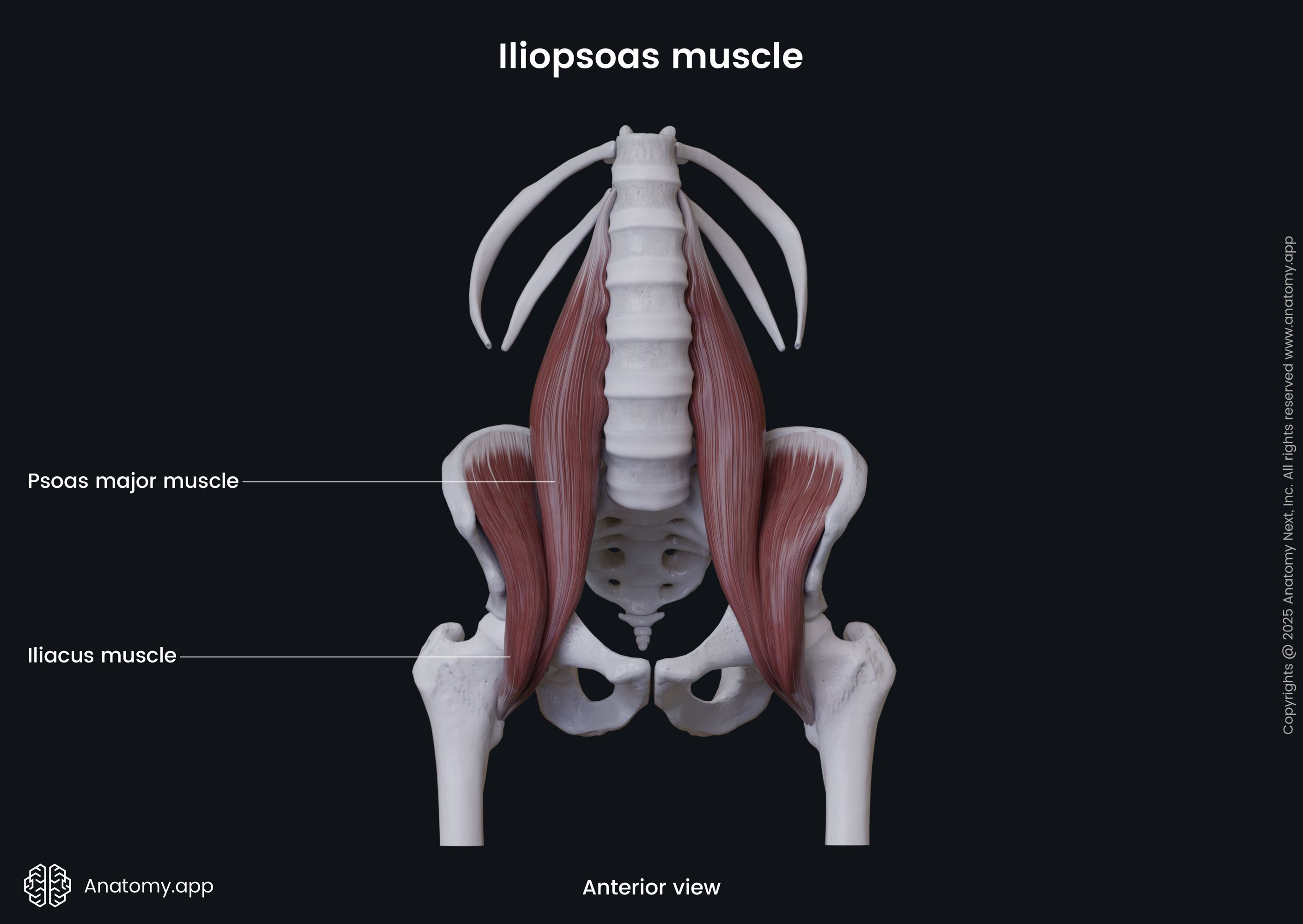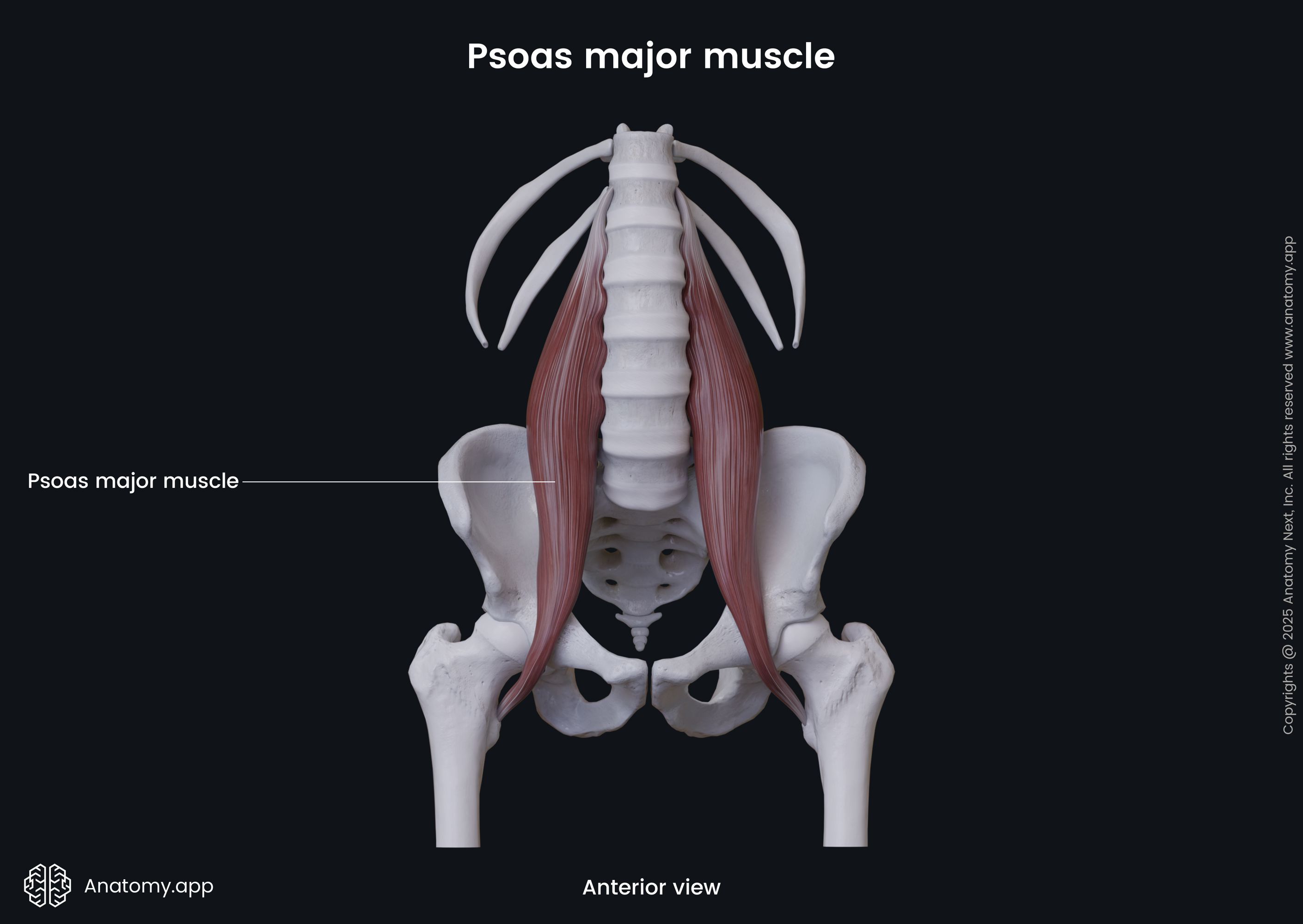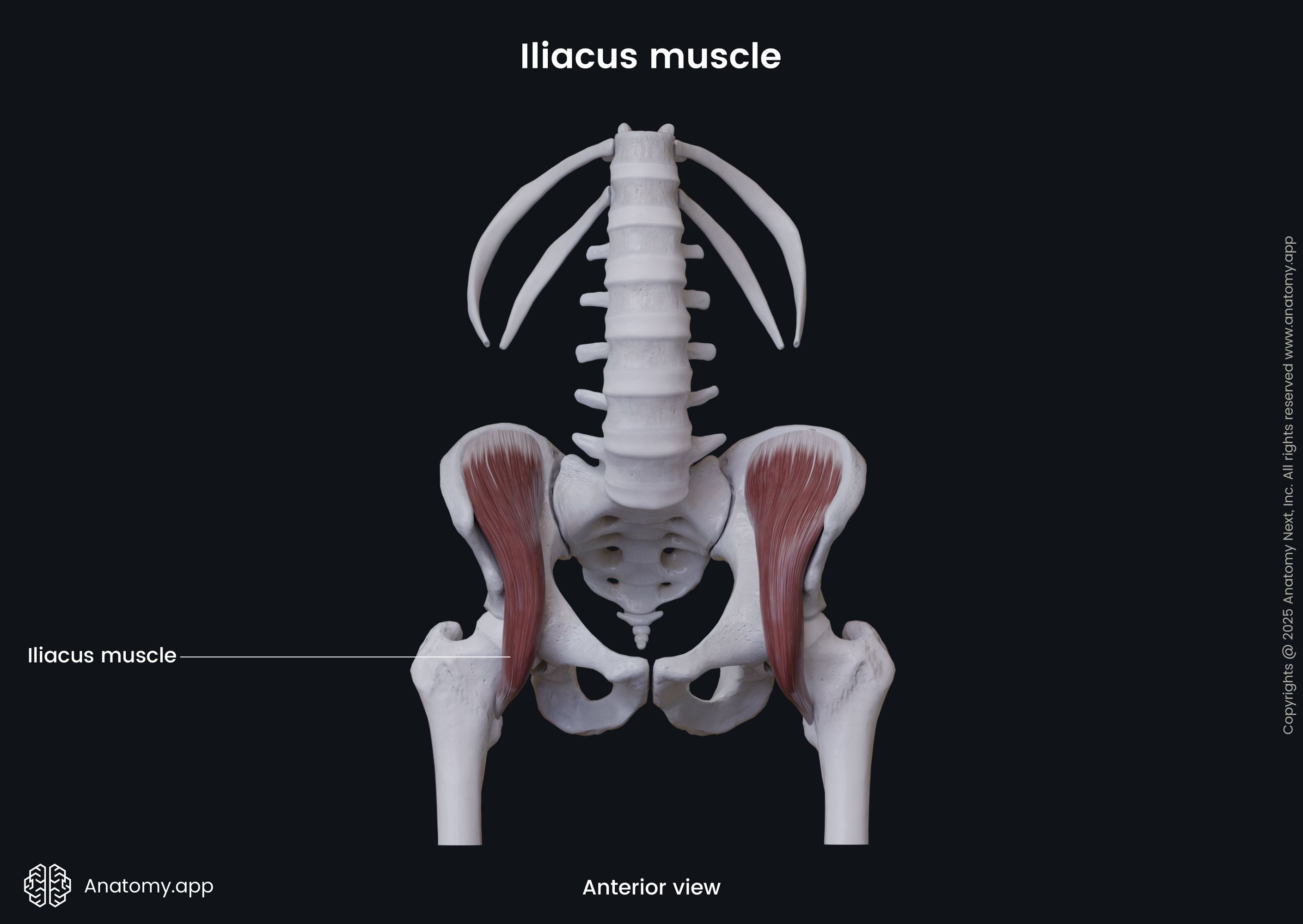- Anatomical terminology
- Skeletal system
- Joints
- Muscles
- Head muscles
- Neck muscles
- Muscles of upper limb
- Thoracic muscles
- Muscles of back
- Muscles of lower limb
- Pelvic muscles
- Muscles of thigh
- Muscles of leg
- Muscles of foot
- Heart
- Blood vessels
- Lymphatic system
- Nervous system
- Respiratory system
- Digestive system
- Urinary system
- Female reproductive system
- Male reproductive system
- Endocrine glands
- Eye
- Ear
Iliopsoas
The iliopsoas (Latin: musculus iliopsoas) is a compound pelvic muscle composed of the psoas major and iliacus. Both muscles have different origin sites, but they share a common insertion place. The iliopsoas belongs to the anterior compartment of the pelvic muscles and is a muscle of the posterior abdominal wall. It is the strongest and main hip flexor muscle. Besides the thigh flexion, the iliopsoas also provides external rotation of the thigh at the hip joint.

The psoas major originates from the twelfth thoracic (T12) and first four lumbar vertebrae (L1 - L4) and their corresponding intervertebral discs. In contrast, the iliacus originates from the iliac fossa. The psoas major and iliacus muscles merge at the level of the hip joint capsule, forming a common tendon for iliopsoas muscle. And finally, the iliopsoas muscle inserts on the lesser trochanter of the femur.

